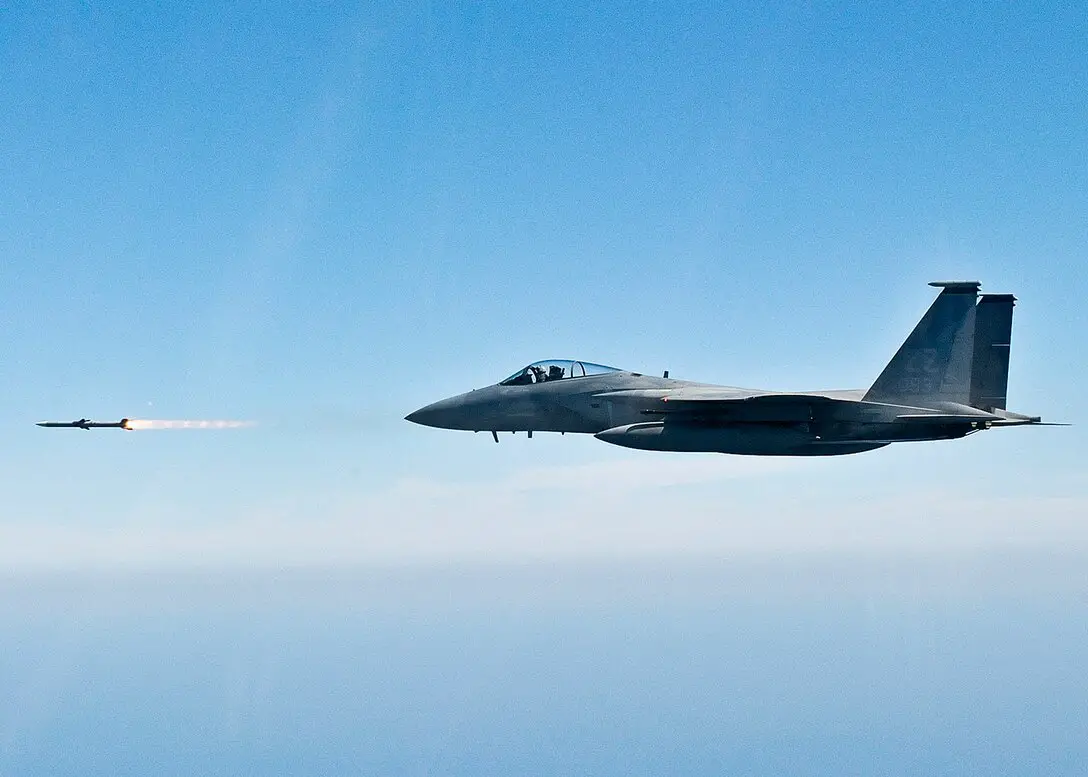The U.S. State Department has made a determination approving a possible Foreign Military Sale to the Kingdom of Saudi Arabia of AIM-120C Advanced Medium Range Air-to-Air Missiles (AMRAAM) and related equipment for an estimated cost of $650 million. The proposed sale will improve Saudi Arabia’s capability to meet current and future threats by increasing its stocks of medium-range missiles for its fighter aircraft fleet for its national defense. This potential sale will support Saudi Arabia’s Eurofighter Typhoon, F-15C/D, F-15S, and F-I5SA programs and will further strengthen the interoperability between the United States and Saudi Arabia.
The Kingdom of Saudi Arabia has requested to buy two hundred eighty (280) AIM-120C-7/C-8 Advanced Medium Range Air-to-Air Missiles (AMRAAM) and five hundred ninety-six (596) LAU-128 Missile Rail Launchers (MRL). Also included are containers; weapon support and support equipment; spare and repair parts; U.S. Government and contractor engineering, technical and logistical support services; and other related elements of logistical and program support. The total estimated cost is $650 million. The principal contractor will be Raytheon, Waltham, Massachusetts. Saudi Arabia will have no difficulty absorbing these missiles into its armed forces.
AIM-120 advanced medium-range air-to-air missile (AMRAAM) is a new generation all-weather, missile manufactured by Raytheon. The AMRAAM is in service with the US Air Force (USAF), US Navy (USN), and US-allied nations. The AMRAAM has been delivered to more than 36 countries. The missile has completed over 1.8 million captive-carry hours and 2,900 live firings. It is integrated with combat aircraft such as the F-15, F-16, F/A-18, F-22, Typhoon, Gripen, Tornado, Harrier, F-4, and the F-35 Joint Strike Fighter. When an AMRAAM missile is launched, NATO pilots use the brevity code Fox Three.
The AIM-120C C-variant has been steadily upgraded since it was introduced. The AIM-120C-6 contained an improved fuze (Target Detection Device) compared to its predecessor. The AIM-120C-7 development began in 1998 and included improvements in homing and greater range (actual amount of improvement unspecified). It was successfully tested in 2003 and is currently being produced for both domestic and foreign customers. It helped the U.S. Navy replace the F-14 Tomcats with F/A-18E/F Super Hornets – the loss of the F-14’s long-range AIM-54 Phoenix missiles (already retired) is offset with a longer-range AMRAAM-D. The lighter weight of the advanced AMRAAM enables an F/A-18E/F pilot greater bring-back weight upon carrier landings.
